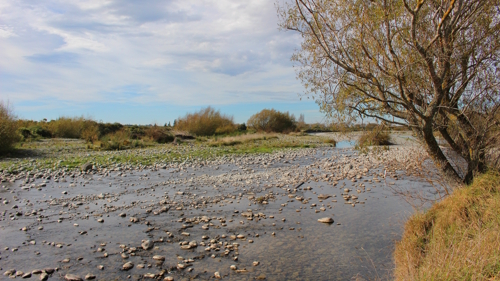
Selwyn River/Waikirikiri, Canterbury
Lincoln Agritech researchers have developed a method that reveals how much ephemeral rivers recharge regional aquifers, using satellite imagery.
And they can extrapolate back in time to reveal historical recharge rates from historical flow data.
Ephemeral rivers regularly, and naturally, dry up over part of their course for part of the year. They are a particularly important source of groundwater recharge in regions where water is scarce, set to increase with climate change. This research studied the Selwyn/Waikirikiri and Orari rivers in Canterbury.
Researchers Antoinne Di Ciacca, Lucille Knight, Maxime Brand, Patrick Durney, Scott Wilson and Thomas Wöhling, collated hourly average flow rates in the two rivers from data collected between 2010 and 2023.
They then used satellite imagery to show precisely where the rivers dried up (the drying front) under those different flow conditions. By comparing the drying front location and the flow data they were able to derive a formula that accurately reflects the amount of groundwater recharge.
Using that information, they then trained statistical models to predict total groundwater recharge between 1983 and 2023.
They could not detect any noticeable influence of climate change, but the driest years did correlate with El Niño weather patterns.
They also calculated the groundwater recharge from the Selwyn River accounts for around 20% of the yearly volume allocated for abstraction in its catchment, while the recharge from the Orari river accounts for 300% of the extraction allocation in its catchment.
“This shows that for managing groundwater abstraction, the recharge from the Orari River is more important than the one from the Selwyn River,” the authors write.
The researchers also revealed minimum recharge rates from both rivers to maintain spring-fed streams.
“Our recharge-threshold estimates to maintain spring flows can be useful in designing environmental regulations protecting groundwater-dependent ecosystems of the Canterbury Plains,” they write.
The researchers hope their methods will be used to understand and manage ephemeral rivers in other regions.
The paper “Transmission losses and groundwater recharge from ephemeral rivers in the Canterbury Plains (New Zealand): Historical reconstruction and environmental implications” has been published in Journal of Hydrology: Regional Studies.


